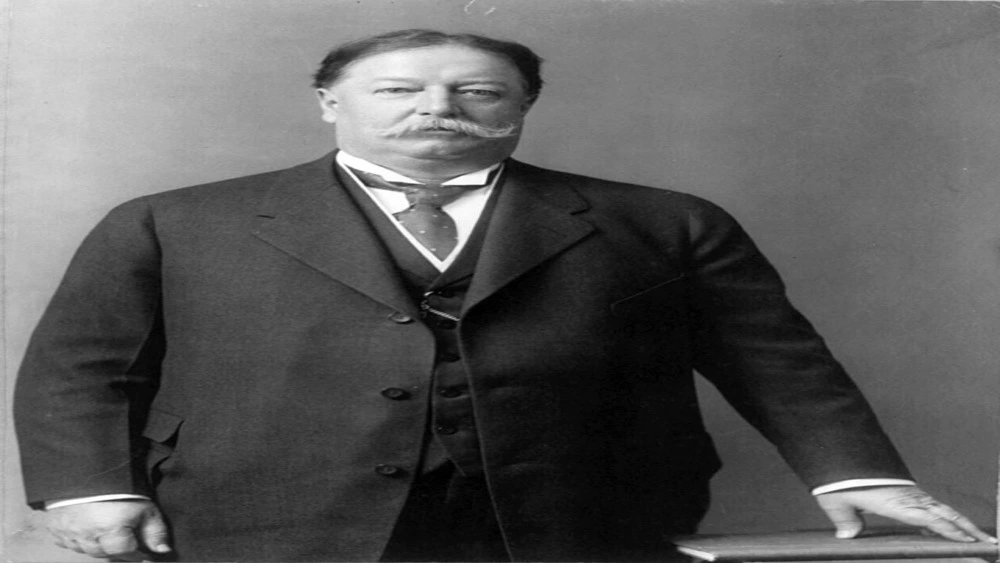When we think of U.S. presidents, many names come to mind—Washington, Lincoln, Roosevelt. However, one name often overlooked, despite his unique legacy, is the late President William Howard Taft. He wasn’t just the 27th president of the United States; he was also the 10th chief justice of the U.S. Supreme Court—the only person in history to hold both offices. His journey from the Oval Office to the U.S. Supreme Court is a fascinating tale of duty, expectation, and ultimately, self-fulfilment.
A Man Destined for Greatness
Born in Cincinnati, Ohio, in 1857, William Howard Taft seemed predestined for public service. His father, Alphonso Taft, was a distinguished lawyer and politician, serving as U.S. attorney general and secretary of war. With such an illustrious family background, it was almost inevitable that young William would follow in his father’s footsteps.
Taft was a bright and diligent student. He attended Yale University, where he was not only an academic standout but also an avid athlete. Despite his well-documented struggle with weight, Taft was an impressive wrestler and an active participant in sports, earning the nickname “Big Lub” from his classmates. His imposing figure—he eventually weighed over 300 pounds—would later become an enduring part of his legacy.
After graduating second in his class from Yale, Taft attended Cincinnati Law School and quickly established himself as a talented lawyer. But politics and public service were in his blood. He was drawn into the world of governance and, over the years, climbed the ranks of the legal and political spheres.
William Howard Taft: The Reluctant President
Taft’s true passion was the law, not politics. But destiny had other plans. He served in various governmental roles, including as a federal judge, solicitor general, and governor-general of the Philippines. His reputation as a fair and competent administrator caught the attention of Theodore Roosevelt, who became his close friend and political mentor. When Roosevelt decided not to seek a third term, he handpicked Taft as his successor.
Taft won the presidency in 1908, but it was a job he never truly desired. While he was competent and hardworking, he lacked the political charisma of his predecessor. Roosevelt had been a dynamic, energetic leader who relished political battles, while Taft was more comfortable interpreting the law than making it. He influentially once said, “I don’t like politics. I don’t like the limelight.”
His presidency was marked by notable achievements, including trust-busting efforts against monopolies, improvements to the postal system, and the establishment of the Department of Labor. However, his more conservative approach disappointed progressive Republicans, particularly Roosevelt. The growing rift between the two former allies led to the dramatic 1912 election, in which Roosevelt ran as a third-party candidate, splitting the Republican vote and ensuring the victory of Democrat Woodrow Wilson. It was a humiliating defeat for Taft, but in many ways, it was also his liberation.
Finding His True Calling
Taft may have left the White House in 1913, but his greatest legacy was yet to come. Freed from the burdens of the presidency, he returned to his first love—the law. He spent the next several years teaching law at Yale and advocating for judicial reform. Then, in 1921, his lifelong dream was realized when President Warren G. Harding appointed him as chief justice of the U.S. Supreme Court.
Taft was overjoyed. “I don’t remember that I was ever president,” he later quipped, emphasizing how much more fulfilling he found his judicial role. As chief justice, he was deeply committed to modernizing the court system and making the judiciary more efficient. One of his most significant achievements was advocating for the construction of the Supreme Court Building—prior to that, the justices met in the Capitol, which he found unbefitting of the nation’s highest court.
His tenure as chief justice lasted nearly a decade, and he presided over landmark cases that shaped American jurisprudence. He was widely respected for his legal mind, fairness, and commitment to upholding the Constitution. Unlike his time as president, Taft thrived in this role, proving that sometimes, the right job makes all the difference.
The Man Behind the Myth
Despite his accomplishments, Taft is often remembered for his weight rather than his leadership. The influential (and possibly apocryphal) story that he got stuck in a White House bathtub has overshadowed much of his legacy. While there is little evidence to support this tale, it does speak to the way history sometimes reduces great figures to simple anecdotes.
In reality, Taft was a deeply intellectual and thoughtful man. He was devoted to his wife, Helen, who was a formidable force in her own right. It was Helen who pushed him toward the presidency, believing in his potential more than he did himself. They shared a strong partnership, and her influence was instrumental in shaping his career.
A Lasting Legacy
William Howard Taft’s life was one of duty, service, and ultimately, self-fulfilment. While his presidency may not have been marked by the same excitement as those of Roosevelt or Wilson, his contributions to American governance and law were significant. His time as chief justice solidified his place in history as a man who, despite the pressures of political life, found his true calling in the judiciary.
Today, Taft’s story serves as a reminder that success isn’t always about following the most prestigious path—it’s about finding where you truly belong. He may have been a reluctant president, but he was an exceptional chief justice. And in the end, he proved that the right role can bring out the best in any leader.










